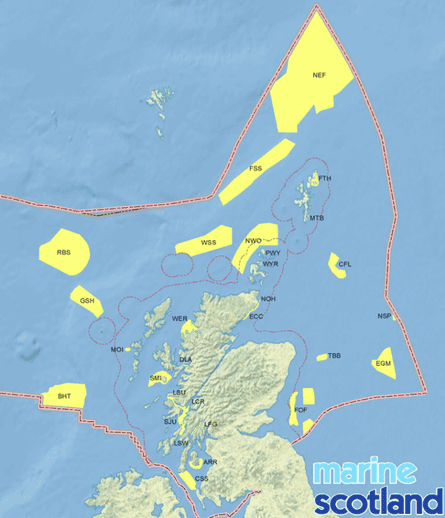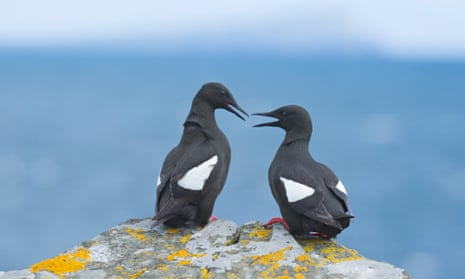Rare and threatened species including common skate, the ocean quahog, flameshell beds and the black guillemot are being given extra protection after 30 new marine protected areas off the Scottish coast were announced on Thursday.
The network includes what is thought to be Europe's largest marine protected area (MPA) in the far north east of UK territorial waters, in the north east Faroe Shetland channel to conserve deep sea sponges, muds and geological features.
The 30 new sites, which double the size of Scotland's MPA network after long delays, will cover cliffs in Caithness, deep ocean seabed habitats, sandeel colonies and marine fauna which inhabit coldwater reefs such as feather stars.
The ocean quahog, a bivalve which lives buried under the sand, can live for more than a century and can grow to 13cm in size. They fished for consumption in Iceland and Norway, but take up to 50 years to reach marketable size.

As the new MPAs were confirmed on Thursday, the official conservation agency Scottish Natural Heritage recommended that four extra MPAs should be considered to protect minke whale, Risso's dolphins and basking sharks – species not included in the new designations.
Scottish ministers added announced they are also designating 14 draft special protection areas for seabirds after coming under intense pressure from the Royal Society for the Protection of Birds to greatly increase their protection.
RSPB Scotland was furious that threatened birds such as Arctic skua, Arctic terns and kittiwakes were excluded from the new set of MPA sites. The conservation group said nine seabirds resident in Scotland had shown sustained declines since 1986.
Stuart Housden, director of RSPB Scotland, said this was an “excellent first step” but he urged ministers to extend protection to other seabird feeding areas, but also explicitly include seabirds in the new MPAs.
“Although we are now at last making progress in protecting key areas, our seabirds are still without the protection they need further out at sea where they feed,” Housden said.
In a reference to some of the major tensions in marine conservation with protecting fisheries and designating large offshore areas for renewable energy projects, Housden said the outer Firth of Forth MPA was of “enormous value” to gannets and kittiwakes but was being earmarked for a large windfarm.
Calum Duncan, marine taskforce convenor of the Scottish Environment umbrella group and a Marine Conservation Society manager, said government agencies now needed to properly enforce these “underwater wonderlands.”
Duncan said Scottish ministers had wisely listened to a strong consensus amongst marine scientists that threats from human activities had to be better managed.
“By setting up these MPAs the government has wisely placed its confidence in that verdict,” he said. “The work does not stop here – for the time-being these MPAs are just lines on maps, so careful management will be needed to ensure they actively help recover our sealife.”

Comments (…)
Sign in or create your Guardian account to join the discussion